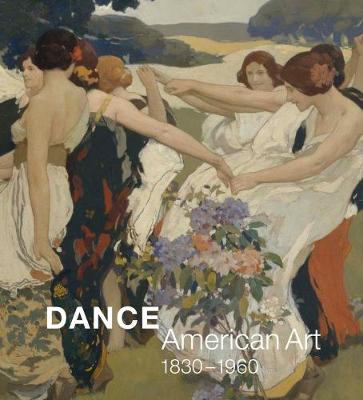Detroit Institute of Arts
2 total works
Frederic Church
by Kenneth John Myers, Kevin J. Avery, Gerald L. Carr, and Mercedes Volait
Published 21 November 2017
A beautiful overview of fascinating paintings of the classical world and the Holy Land by a beloved American artist
Frederic Church (1826–1900), one of the leading painters of 19th-century America and the Hudson River School, also journeyed around the globe to find fresh inspiration for his highly detailed compositions. Among Church’s lesser-known masterpieces are his paintings of the Middle East, Italy, and Greece, produced in the late 1860s through late 1870s, which explore themes of human history and achievement.
Taking a closer look at this geographical and thematic shift in Church’s practice, this handsome book brings together the artist’s major paintings of Athens, Rome, Jerusalem, and the surrounding region. The essays concentrate on a set of six major paintings of architectural and archaeological marvels; one essay also spotlights Olana, Church’s home in New York State, which reflects the influence of Middle Eastern design. This impressive volume stands apart in its new approach to the artist’s work and its quest to determine why and how this quintessentially American figure was drawn to scenery and themes from the other side of the globe.
Distributed for the Detroit Institute of Arts
Frederic Church (1826–1900), one of the leading painters of 19th-century America and the Hudson River School, also journeyed around the globe to find fresh inspiration for his highly detailed compositions. Among Church’s lesser-known masterpieces are his paintings of the Middle East, Italy, and Greece, produced in the late 1860s through late 1870s, which explore themes of human history and achievement.
Taking a closer look at this geographical and thematic shift in Church’s practice, this handsome book brings together the artist’s major paintings of Athens, Rome, Jerusalem, and the surrounding region. The essays concentrate on a set of six major paintings of architectural and archaeological marvels; one essay also spotlights Olana, Church’s home in New York State, which reflects the influence of Middle Eastern design. This impressive volume stands apart in its new approach to the artist’s work and its quest to determine why and how this quintessentially American figure was drawn to scenery and themes from the other side of the globe.
Distributed for the Detroit Institute of Arts
Exhibition Schedule:
Detroit Institute of Arts
(10/22/17–01/15/18)
Reynolda House Museum of American Art, Winston-Salem, NC
(02/08/18–05/13/18)
Wadsworth Atheneum Museum of Art, Hartford, CT
(06/03/18–08/26/18)
Dance
by Thomas F Defrantz, Lynn Garafola, Dakin Hart, Constance Valis Hill, Analisa Leppanen-Guerra, Valerie J. Mercer, Jacqueline Shea Murphy, Kenneth John Myers, and E. Bruce Robertson
Published 1 March 2016
A landmark examination of the art and artists inspired by American dance from 1830 to 1960
As an enduring wellspring of creativity for many artists throughout history, dance has provided a visual language to express such themes as the bonds of community, the allure of the exotic, and the pleasures of the body. This book is the first major investigation of the visual arts related to American dance, offering an unprecedented, interdisciplinary overview of dance-inspired works from 1830 to 1960.
Fourteen essays by renowned historians of art and dance analyze the ways dance influenced many of America’s most prominent artists, including George Caleb Bingham, William Sidney Mount, Winslow Homer, John Singer Sargent, Cecilia Beaux, Isamu Noguchi, Aaron Douglas, Malvina Hoffman, Edward Steichen, Arthur Davies, William Johnson, and Joseph Cornell. The artists did not merely represent dance, they were inspired to think about how Americans move, present themselves to one another, and experience time. Their artwork, in turn, affords insights into the cultural, social, and political moments in which it was created. For some artists, dance informed even the way they applied paint to canvas, carved a sculpture, or framed a photograph. Richly illustrated, the book includes depictions of Irish-American jigs, African-American cakewalkers, and Spanish-American fandangos, among others, and demonstrates how dance offers a means for communicating through an aesthetic, static form.
Distributed for the Detroit Institute of Arts
As an enduring wellspring of creativity for many artists throughout history, dance has provided a visual language to express such themes as the bonds of community, the allure of the exotic, and the pleasures of the body. This book is the first major investigation of the visual arts related to American dance, offering an unprecedented, interdisciplinary overview of dance-inspired works from 1830 to 1960.
Fourteen essays by renowned historians of art and dance analyze the ways dance influenced many of America’s most prominent artists, including George Caleb Bingham, William Sidney Mount, Winslow Homer, John Singer Sargent, Cecilia Beaux, Isamu Noguchi, Aaron Douglas, Malvina Hoffman, Edward Steichen, Arthur Davies, William Johnson, and Joseph Cornell. The artists did not merely represent dance, they were inspired to think about how Americans move, present themselves to one another, and experience time. Their artwork, in turn, affords insights into the cultural, social, and political moments in which it was created. For some artists, dance informed even the way they applied paint to canvas, carved a sculpture, or framed a photograph. Richly illustrated, the book includes depictions of Irish-American jigs, African-American cakewalkers, and Spanish-American fandangos, among others, and demonstrates how dance offers a means for communicating through an aesthetic, static form.
Distributed for the Detroit Institute of Arts
Exhibition Schedule:
Detroit Institute of Arts
(03/20/16–06/12/16)
Denver Art Museum
(07/10/16-10/02/16)
Crystal Bridges Museum of American Art
(10/22/16-01/16/17)

